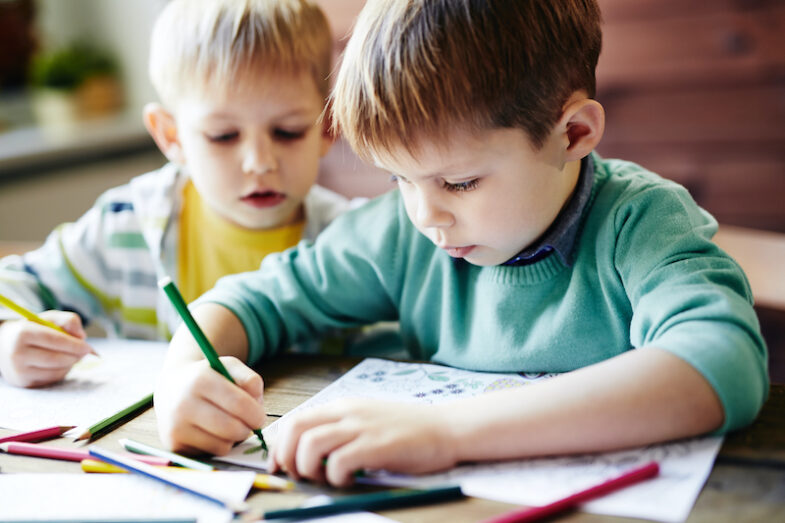Adopting Siblings: What You Need to Know
Two-thirds of children in the foster care system have at least one brother or sister in the system as well. Ideally, sibling groups are kept together as often as possible and they are all adopted by the same family. Given that so many children in foster care have siblings, there are many myths surrounding what it’s like to adopt sibling groups.
Here at Unity Parenting and Counseling, we want the adoption experience to be enjoyable for everyone involved, so we’ll explain what you need to know when it comes to adopting siblings. We’ll discuss facts and statistics about sibling adoption, some common misconceptions about adopting siblings, and the pros and cons of adopting sibling groups.
Facts and Stats About Sibling Adoption

For many United States parents wanting to adopt, adopting a sibling group from foster care is ideal for many reasons. If you’re interested in sibling adoption, then here are 10 facts about adopting siblings that you should consider:
- There are 402,000 children in the U.S. Foster care system.
- 102,000 foster children are waiting to be adopted.
- 23% of children waiting to be adopted were registered with siblings.
- Siblings adopted together can support each other.
- Growing up in the same family can help siblings grow up healthier.
- Siblings often feel safer together (even if they argue sometimes).
- Living with a sibling helps kids learn how to develop stronger relationships.
- Preserving the bond between siblings can strengthen the family bond.
- Even unrelated kids raised together in foster care can be considered siblings.
- Talking to families who have adopted siblings is a good start to knowing if adopting siblings is right for your family.
For as many facts about sibling adoption, there are as many misconceptions about the process out there as well.
Common Misconceptions About Adopting Siblings

Unity Parenting and Counseling wants to make sure you’re fully prepared to take on a sibling adoption venture. To that end, we’ll address some of the common misconceptions about adopting siblings and the actual realities surrounding the adoption process.
Myth: Older siblings who act in a parental role should be separated from their younger siblings to reduce interference with the new foster parent.
Truth: Separating siblings is detrimental to both age groups. Younger siblings are forced to navigate a frightening new world without kindred support, and older siblings are left to feel responsible for their younger siblings even when they aren’t placed together. Adopting siblings together allows adoptive parents to create a positive dynamic and help siblings develop appropriate roles.
Myth: Siblings should be separated to prevent sibling rivalry, particularly in cases of conflict.
Truth: When siblings are separated, they learn to walk away from conflict rather than process it in a healthy way. It may also increase the trauma of feeling separated from everything they once knew. Keeping siblings together helps them develop stronger sibling relationships within a healthy and supportive environment, while also providing them with the opportunity to learn to resolve differences.
Myth: If a sibling abuses another, they should be separated.
Truth: It’s imperative to distinguish between true abuse and other forms of sibling hostility. Removing a child from their sibling does not guarantee they won’t be abused in another setting, unfortunately. Per childwelfare.gov, adoptive parents who are aware of the abuse and can put safety plans in place to address can actually help keep siblings together and help them learn appropriate social and emotional behavior.
Myth: Children with special needs should be separated from their siblings so they get specialized attention.
Truth: Families who adopt children with special needs along with their siblings can still provide each child with the individualized attention they need and deserve. In fact, a child with special needs may benefit more from such a situation when compared to being placed in a home where there are other children who require increased attention and specialized resources.
Myth: Sibling relationships are only valuable if the children have grown up together or have the same biological parents.
Truth: Children in the welfare system may develop sibling-like relationships with non-related brothers and sisters that they’ve lived with both in their biological families and in foster care. Therefore, professionals should consider the child’s definition of who is and is not a sibling prior to making placement decisions.
Myth: If you’re considering adopting siblings, be prepared to adopt groups that include four or more children.
Truth: Most sibling groups include two or three siblings. Fewer children are in sibling groups of four to six siblings.
Myth: Most adoptive families aren’t willing or able to parent large sibling groups.
Truth: Most adoptive families are willing to adopt more than one child. Some families picture more than one child as a part of their ideal family. Other larger families are willing to adopt larger groups of siblings.
Myth: Adoptive families are less likely to be interested in adopting children who are members of sibling groups.
Truth: When armed with the knowledge that a child is part of a sibling group, appropriate resources about adopting siblings, and the ability to talk with families who have adopted children in groups, many adoptive families consider adopting siblings together.
Myth: Adopted siblings will join together to cause problems for the adoptive family.
Truth: Siblings who are placed together benefit from the sibling relationship in ways that do not negatively affect the parent/child relationship. Siblings can provide emotional support for each other when they are placed together. Siblings who are separated tend to be more anxious and depressed than those who were adopted together.
Myth: Sibling adoptions result in higher failed adoption rates.
Truth: When siblings are placed separately, they tend to experience greater emotional and behavioral problems. Siblings who are adopted together experience many emotional benefits and a lower risk for failed placements.
Pros and Cons of Adopting Siblings

Adopting siblings is an adventure. There are many benefits to adopting sibling groups. However, there are some potential challenges to consider before adopting siblings.
Here are some pros and cons of adopting siblings.
Benefits of Adopting Siblings
When you adopt siblings together, you know they’ll have an instant best friend (most of the time). Sure, typical sibling drama is to be expected, but siblings also have a strong bond. Navigating foster care and adoption can be traumatic and scary for kids, but if they’ve got a sibling with them, they know they can depend on them to have their back and stick with them through tough times.
Siblings who are adopted together will also have someone who understands what they are going through. Siblings can be a comforting support system for each other. They provide one another with a sense of stability and security, which they need even more when they’re in foster care or a new adopted family.
When you adopt sibling groups, the bond between them isn’t broken or damaged. That’s one less adjustment they have to make when developing attachments to their foster or adoptive parents. This sibling strength helps them connect with caregivers easier and helps them adjust to, and like, their new home. Sibling togetherness also promotes better mental health because the children don’t experience yet another loss.
Challenges of Adopting Siblings
Most siblings, whether they’re adopted or not, experience sibling rivalry to some degree. This is especially true when the siblings are close in age. When you adopt sibling groups, you’ve got to be prepared for the inevitable bickering and arguing. Even though they’re siblings, each child is an individual who will process the situation differently. Give each child time to figure out where they fit in their new family dynamic. Also, be sure to give each sibling individualized attention.
One-on-one attention can be challenging to provide when you’ve got siblings, but it’s not impossible. Having one-on-one time with children at any age is important for many reasons. In the case of adoption, it is even more so. One-on-one time builds bonds and trust and lets you learn more about your new family members.
Adopting siblings can be a wonderful and rewarding experience, complete with benefits and challenges. If you’re ready to make a difference in the lives of multiple children by fostering or adopting, you can learn more by contacting Unity Parenting and Counseling today.
